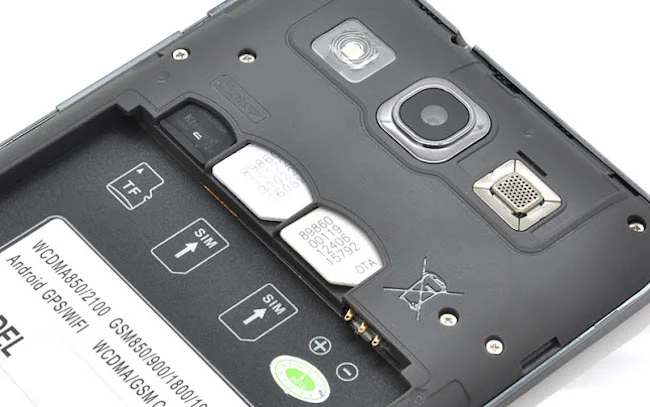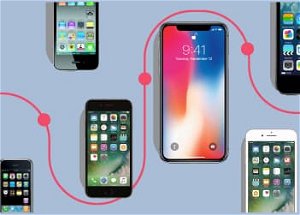You’ve probably seen the terms SIM-only phone plan or prepaid SIM card before.
And, if you’ve ever purchased a phone online or added mobile data access to your tablet, you’ve probably even installed a SIM card.
But what do these tiny chips do? Are all SIM cards the same? Is there any personal information on your SIM card you need to worry about?
In this guide, we're going to explore those questions and more.
What Is It? What Does It Do?
A SIM, also known as a subscriber identity module or subscriber identification module, is a small chip you insert into a dedicated slot on your phone or tablet.
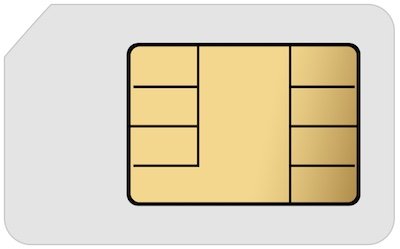
These cards store a unique identifier used to unlock access to a mobile network. Most SIM cards are locked to a particular network—or a set of networks your carrier supports.
If you’d like to switch cell phone carriers, you must get another SIM card from the new provider.
Thinking about switching to another cell phone company? Use our free plan comparison tool to find the best plan.
However, there are a few exceptions—such as the Apple SIM. We’ll talk about it later in this guide.
Why Do I Need One?
While most cell phone companies allow you to make emergency calls without a SIM card, you’ll need one for any other feature—such as calling, texting or using mobile data.
Without a SIM card, your phone is Wi-Fi only.

You can still use Wi-Fi to run apps, place VOIP calls, video chat, play games or stream movies.
But once you’re out of Wi-Fi range, you won’t be able to use your phone for anything that requires data.
How Does It Work?
Your SIM card is like an ID card for your mobile account. Every SIM includes an International Mobile Security Identity (ISMI) number as well as an authentication key.
The IMSI is like a fingerprint for your SIM card. The authentication key is set by your mobile service provider.
When you insert it into your phone, the cell phone towers nearby look at your ISMI and check your authentication key. This verifies what provider you use as well as the features on your account or phone.
While it might seem a bit creepy that your mobile phone provider can see what towers you connect to and what device you’re using, it’s also a safeguard against someone else racking up a hefty bill on your account.
With many providers, the towers you’re using help to determine your location for emergency service calls.
Does My SIM Card Store Anything?
Before smartphones, a SIM card was a convenient way to transfer your contacts or specific settings from device to device.
While the ability to store information on your SIM is still available, it’s not used as much anymore.
Most SIM cards can store around 250 contacts or text messages.
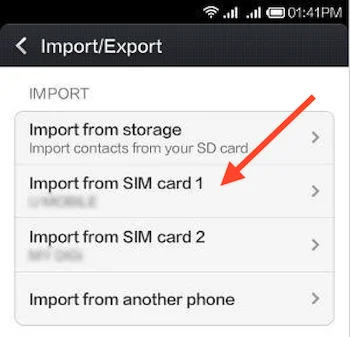
However, since smartphones use Internet-based contacts and messaging, storing contacts or messages on your SIM is irrelevant.
If you switch devices and add your accounts, most will import everything in a matter of seconds, regardless of if you have the same SIM.
Your SIM might also store carrier-specific information--such as Personal Unblocking Codes (PUKs), Service Dialing Numbers (SDNs) and Local Area Identities (LAIs).
We won’t get into specifics on what these do as you don’t have any control over them.
But most provide security features and help to ensure you get a seamless experience no matter where you use your phone.
Are All SIM Cards the Same?
No.
There’s a few differences to keep in mind if you’re looking for a SIM card to use with your device.
SIM Card Sizes
SIM cards come in 5 different sizes:
- Full SIM - 3.35 inches by 2.08 inches (85 mm x 53 mm)
- Mini SIM - 0.98 inches by 0.59 inches (25 mm x 15 mm)
- Micro SIM - 0.59 inches by 0.47 inches (15 mm x 12 mm)
- Nano SIM - 0.48 inches by 0.35 inches (12.3 mm x 8.8 mm)
- Embedded SIM - 0.24 inches by 0.20 inches (6 mm x 5 mm)
 Source: Wikipedia
Source: Wikipedia
Older devices will often use larger SIM cards while newer ones use smaller SIM cards.
If you’re not sure which one your phone needs, check the specifications of your phone via our phone review page.
LTE SIM Cards for CDMA Devices
While rare outside the US, some mobile networks still use a technology known as CDMA.
We won’t get into the techy details, but essentially this means they store the identification needed to access the network in the phone itself.
CDMA carriers include:
Where it gets confusing is 4G LTE access.
Most CDMA carriers require a LTE SIM for high-speed data access.
However, you cannot swap your LTE SIM between devices seamlessly like you can on other GSM carriers.
How Do I Insert a SIM Card in My Phone or Tablet?
Where and how you insert a SIM card will depend on your phone. However, most use one of three configurations.
Under the Rear Cover
In phones with removable back covers, you might find the SIM located under, above or beside the battery. While this placement isn’t as common on newer phone models, you’ll still see it occasionally.
Phones like the Moto G Plus (4th Generation), many Blu phone models and some Nokia models use this arrangement.
You should power down your phone before you remove the rear cover. If you don’t see the SIM slot and your battery is removable, remove the battery and check underneath. Once you’ve located the slot, slide in the SIM with the metal part of the card against the contacts in the slot.
If you don’t see a slot there, it might be the next type.
SIM Slot on the Edge of the Phone
Other phones use a small, spring-loaded slot on the outer edge of the phone.
You’ll need to remove the cover and insert the card.
When inserted properly, it should allow you to place the slot cover back on flush. If it is sticking up, you might need to push the card in further.
Removing the card is as simple as removing the cover and pushing the card back into the slot gently. When you release, it should pop up out of the slot for easy removal.
SIM Card Trays
This is how you must add a card to most dual SIM phones, many newer flagship phone models and all iPhones.
It’s similar to phones that have the SIM slot on the edge of the phone. But instead of moving a flap or cover you’ll likely need to insert a small tool into a hole on the outer edge of the phone or tablet.
If you don’t have the tool that came with your phone, an unfolded paperclip often works. However, you must be gentle to avoid damaging your phone.
Once you’ve ejected the SIM tray from the slot, place the SIM card in the tray and reinsert!
If you can’t find the SIM slot, check your phone manual for specific instructions.
NOTE: Always take care when inserting or removing a SIM card. Improper placement means you won’t get service on your phone. Worse still, you could damage your SIM or phone and need to wait on a replacement!
What If My SIM Card is the Wrong Size?
If your SIM card is too big, it won’t fit in the slot of your phone. If it’s too small, it might get stuck or not connect.
Most companies send out 3-in-1 SIM cards now to account for different phones. These cards start at full size and you can push the card out at other sizes to suit your needs.
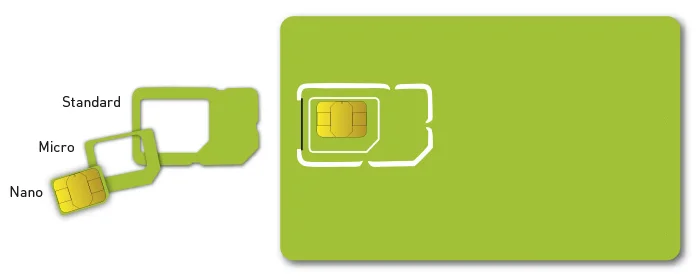
If you keep the parts to the 3-in-1 SIM and need a larger size later, just pop the smaller card back into the larger piece and you’re good to go!
Don’t have a 3-in-1 SIM? Need a different size?
You have two options:
- Contact your carrier and request a new SIM
- Buy a SIM adapter from an online retailer such as Amazon
In both cases, you won’t need to spend much and you’ll be up and running quickly.
NOTE: You might also see SIM card cutters or cutting templates online. While this option might work, some SIM cards are thinner than others. Inserting a SIM into your phone that has been modified by hand might cause damage. As many carriers will replace a SIM for free (and those that don’t only charge a small fee), we recommend just going for a new card or adapter when posible.
Why Do Some Phones Use Two SIM Cards?
Dual SIM phones offer added flexibility in how you use your phone.
Having two SIM slots means you can get extra data from another carrier or even have two phone lines in a single phone.
This is the perfect way to keep your work and communications separate without charging or carrying around multiple phones. It can also be handy if you have a line you only want certain people to know about but don’t want a separate phone to use it.
Our dual SIM phone reviews break down what everyone is saying about the top-rated models on the market. This makes it easy to find out what to expect and pick the perfect model for your needs or budget.
NOTE: Some phones require you to choose between adding a microSD card or adding a second SIM. Be sure to check if the phone has a combination SIM and microSD slot before purchasing if you need to use both features.
What’s Different About an Apple SIM?
This SIM is used with Apple’s iPads. While most SIM cards are locked to a single carrier and their partners, the Apple SIM allows you to switch service providers without changing SIM cards.
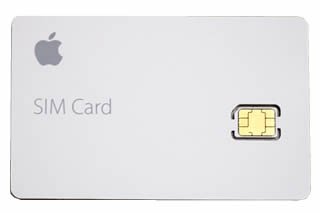
The Apple SIM supports a range of carriers from around the world. This makes it ideal for keeping data costs low without having to swap cards around constantly while traveling with your iPad.
You can find out more at Apple’s Apple SIM page.
Wrapping Up
Your SIM card allows your phone to connect to mobile networks and use voice, data or text messaging services.
The two important considerations are:
- the carrier your bought the SIM from
- the size of the SIM
You can adjust a smaller card to fit your phone using an affordable adapter.
However, adjusting a larger card requires risky cutting and modification.
In most cases, it’s safer to simply request a new SIM from your carrier.
Unless you’re using an Apple SIM, your SIM is likely locked to your carrier. You’ll need a new SIM for each carrier you plan to use.
If you’re starting service with a new company, don’t forget to remove your old SIM and put in the new one your new carrier provides.
P.S. SIM-only plans are a great way to save money on your monthly mobile bill. Our comparison tool makes it simple to see how a SIM-Only plan compares to your existing plan.
